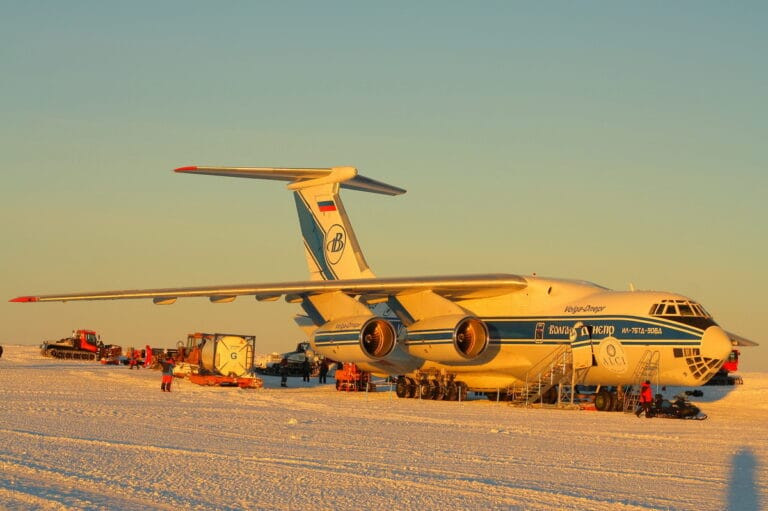The Ilyushin Il-76 was a fixed-wing, four-engine turbofan designed by the Soviet Union’s Ilyushin design bureau as a commercial freighter in 1967 to replace the Antonov An-12.
It was originally developed to deliver heavy loads of equipment to remote areas lacking good quality ground facilities, first flying in March 1971. The Il-76 was able to carry a wide variety of heavy cargo and, with its ramp loading system, it required very little loading equipment and was thus ideal for outsized or heavy items that could not be transported by air at that time.
The aircraft was conceived in 1967 to meet the need for a freighter capable of handling a payload of 40 tonnes for up to 5,000 kilometres in around six hours. The aircraft, primarily built for military purposes, was able to operate from short, rough airstrips, and could handle extreme weather conditions such as to be found in Siberia and the Arctic region.
Its biggest disadvantage, and final demise as a commercial freighter, was because it was very noisy and did not conform to international noise limits. Largely thanks to its ability to carry heavy loads to poor landing conditions, it became a popular emergency response transport for humanitarian aid delivery and disaster relief around the world.
Specialised models have subsequently been produced for firefighting. In the 1990s, modernised bigger variants, also equipped with Soloviev D-30 turbofan engines were developed, but only a few were actually built. After 2004, some IL76s were modernised to the Il-76TD-90VD – with a newly developed PS-90 engine which complied with European noise limitations.
Over the next decade, various improvements and modifications were added, but new fuel and noise-efficient aircraft developed by Boeing and Airbus conformed to increasingly strict regulations and the old droop wing workhorse freighter disappeared from airports. The upgraded aircraft are still in use for military and firefighters in various regions of the world.



